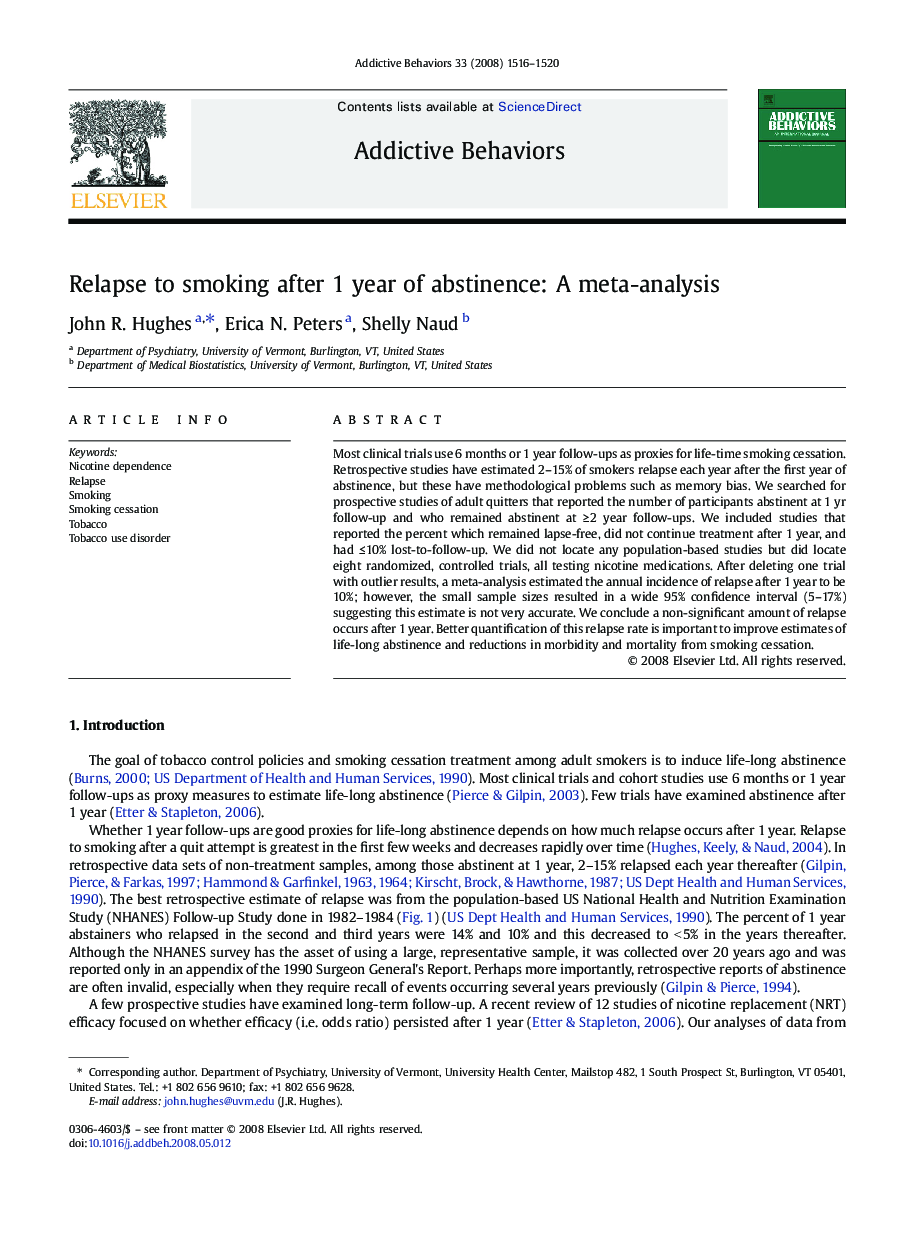| Article ID | Journal | Published Year | Pages | File Type |
|---|---|---|---|---|
| 900419 | Addictive Behaviors | 2008 | 5 Pages |
Most clinical trials use 6 months or 1 year follow-ups as proxies for life-time smoking cessation. Retrospective studies have estimated 2–15% of smokers relapse each year after the first year of abstinence, but these have methodological problems such as memory bias. We searched for prospective studies of adult quitters that reported the number of participants abstinent at 1 yr follow-up and who remained abstinent at ≥ 2 year follow-ups. We included studies that reported the percent which remained lapse-free, did not continue treatment after 1 year, and had ≤ 10% lost-to-follow-up. We did not locate any population-based studies but did locate eight randomized, controlled trials, all testing nicotine medications. After deleting one trial with outlier results, a meta-analysis estimated the annual incidence of relapse after 1 year to be 10%; however, the small sample sizes resulted in a wide 95% confidence interval (5–17%) suggesting this estimate is not very accurate. We conclude a non-significant amount of relapse occurs after 1 year. Better quantification of this relapse rate is important to improve estimates of life-long abstinence and reductions in morbidity and mortality from smoking cessation.
